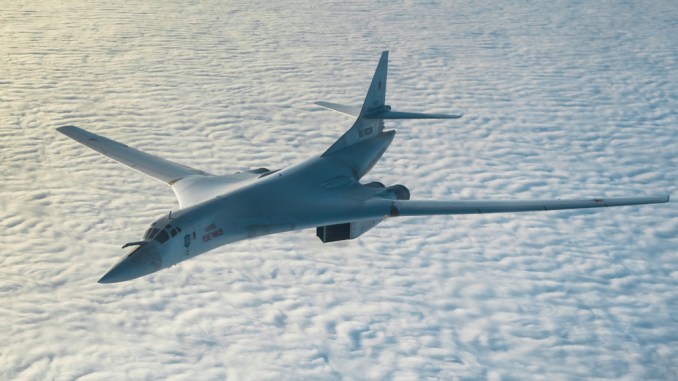In another sign that history repeats itself, Russian forces may once again set up shop in Cuba. With rioting and protests in many major cities, the country divided on a way forward, and both parties screaming the other is destroying America, welcome to the ’60s!
Talks between Russia and the US over Ukraine have not been fruitful. Sergei Ryabkov, Russian Deputy Foreign Minister, did not dismiss the idea of Russia sending troops and supplies into Latin America in response to the US and NATO presence bolstering Ukraine. Ryabkov told a Russian television interviewer, “It all depends on the action by our US counterparts” what actions Russia will take.
Russia already has ties with numerous South and Latin American nations. Venezuela has been a good customer of Russian arms and goodwill for years. It has been estimated that arms transfer agreements between Russia and Venezuela are in excess of $13 billion dollars. Venezuela is a founding member state of ALBA, an alliance of South and Latin American countries interested in NOT working with the US or its allies. According to their website, the Bolivarian Alliance for the Peoples of our America is a “political, economic, and social alliance in defence of independence, self-determination and the identity of peoples comprising it”.
While the goals of independence and self-determination sound laudable, what does it have to do with Russia?
Money.
The USSR put lots of money into South and Central Americas during the Cold War. While not flooding the countries with troops, the USSR brokered trade agreements, provided aid, and sold arms to numerous countries in the Western hemisphere. All in the name of keeping that door unlocked, and the possibility of friendly nations to stage from in the event of WW3. After the Cold War whimpered to a halt, Russia retreated back into itself, severely curtailing support in the region.
In the early 1990s, Russia began to rebuild diplomatic relations with Latin American countries. Russian president Boris Yeltsin indicated he was interested in bringing the US and Russia closer, and diplomatic relations flourished. After the election of Vladimir Putin, things slowly began to shift. Putin is more of a hardliner than Yeltsin was. Putin looks for Russia to project world power not as an equal to the US, but as superior to. If the US can station troops in Poland, on Russia’s doorstep, Putin wants that same ability against the US. While reciprocity in many things is desirable, not so in this case.
In 1962, the human race came as close to annihilation as it has ever been. The Cuban Missile Crisis raised tensions to the twanging point between the US and USSR, after Fidel Castro and Nikita Khrushchev decided Cuba was a great place to stage Soviet ICBMs pointed at the US. Granted, this was in response to US ICBMs in Turkey and Italy pointing at the Soviet Union. Kennedy, in consultation with the National Security Council, decided on naval “quarantine” of Cuba in order to keep Soviet missiles from reaching the island. The U.S. Navy announced that it would board and inspect any Russian ships heading for Cuba. At the same time, troops and aircraft poured into military bases in Florida signaling to Russia that we might invade Cuba. Khrushchev realized that Kennedy was not backing down and that WWIII could start in the Florida Straits. In exchange for a public promise from the U.S. not to invade Cuba, the Soviets dismantled their missile sites. Many years later it was revealed we also agreed to remove our own ballistic missiles in Turkey. Tragedy averted.
Russia is not shipping ICBMs to Cuba this time. It is, however, deploying bombers to Venezuela. Tu-160 bombers have been to and around Venezuela as part of training and cooperation between Venezuelan and Russian forces. Much the same way US forces deploy to and train with African and European partners, Russia now is doing it in our backyard. More like the vacant lot at the end of the block, but that’s still pretty close. Add to that the re-opening of the Tu-160 production lines, agreements to host visiting warships, and Russia’s obvious land desires in Eastern Europe, and it should make the US stop and take notice.
US policy in Central and South America has been spotty over the last few decades. With America’s overwhelming presences in the Middle East and keeping an eye on China, the biggest threats from South America have been migrant “caravans” splashed all over the news, usually near some sort of election or right after some major scandal. Mainstream media, and the US government as a whole, have been using South and Central Americas as political fodder and not much else.
Now, however, the Americas NOT preceded by the United States of are increasingly embracing Russian “goodwill” in their areas. The Cuban Missile Crisis came as a direct result of US involvement in Cuba at a time when Russia was courting the region. Today, those ICBM launch sites have been replaced by long-range bombers, but the flowers and candy are still the same. Russia has gone a’courtin’, and it’s looking for a dance partner.
Already have an account? Sign In
Two ways to continue to read this article.
Subscribe
$1.99
every 4 weeks
- Unlimited access to all articles
- Support independent journalism
- Ad-free reading experience
Subscribe Now
Recurring Monthly. Cancel Anytime.

